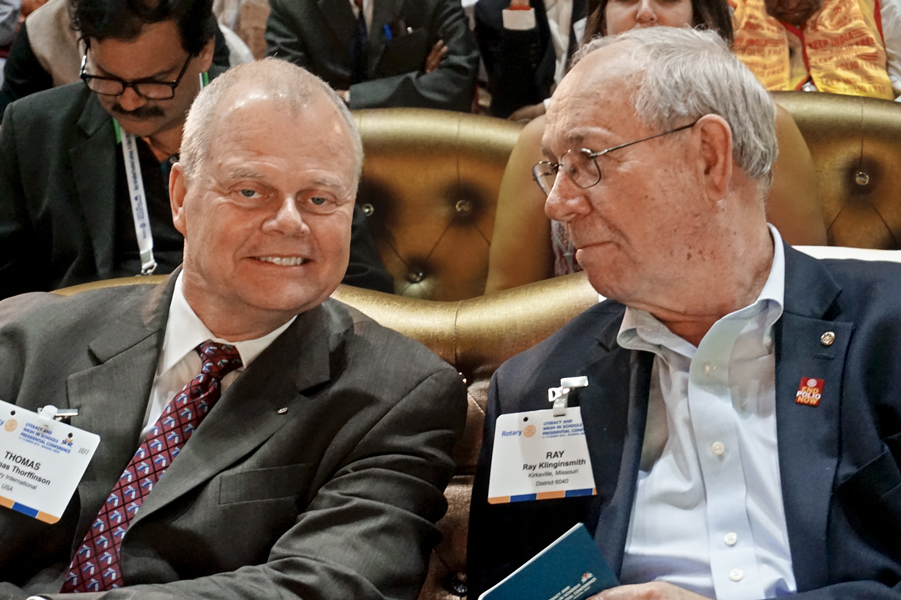

His reason for joining Rotary was simple. “Because my father was a Rotarian. I joined his law firm and he made me join his club,” says incoming TRF Vice Chair Thomas Thorfinnson. That was in 1980 and the club in Minnesota, USA had 140 members. “I was very young, only 24, and nobody in the club was within ten years of me!”
I catch up with Thorfinnson at RI President K R Ravindran’s Presidential Conference in Kolkata after being prompted by Ravindran to interview him. “He is extremely sharp and intelligent and has so many interesting stories to tell,” is the RI President’s certificate.
So how was the experience in the club where he was the youngest member? “Extremely frustrating, it was all male, very much oriented to my father’s generation and not very attractive for me,” he grins.
But he stayed with the old men’s club “as it was good for business.” It took him all of twelve years to really get connected to his club and to Rotary. This happened in 1992 when he became President of the club. Cliff Dochterman was then the RI President, and he was asked to serve on RI District 5950’s TRF committee. The involvement grew stronger when he became DG in 1996–97, and RI Director in 2009–11, “the same years as Ravi (current RI President) and we became good friends.”
The very first request his committee of 1992–93 got, which was to define his Rotary work in the coming years, came from Rtn Rick Jacobson, whose church was engaged in a water project in the Dominican Republic in the Caribbeans. About 25 per cent of the children there died before the age of five due to contaminated drinking water, falling prey to diarrhoea, dysentery, etc.
Everyone has places they can serve best. I am blessed that doors opened for me so that I could open doors for people in need.
With his club’s money and TRF funds totalling $10,000, Jacobson had drilled three wells in the country, and when he visited it again two years later, a woman recognised and hugged him and said: “After Rotary drilled the wells, the children have stopped dying.”
At that point, Thorfinnson was the outgoing DG, and was to become the DRFC (District Rotary Foundation Chair). “Rick and I had become close friends and he called me to tell this story.” As luck would have it, Thorfinnson was to address a small group of Rotarians — five club presidents and an Assistant Governor — the same afternoon. This was in 1998; the AG was “so moved by the story that he gave me a cheque for $100,000. But he said you can’t cash the cheque as I need to get a bonus of $100,000. I’ll give you six weeks to match this amount; if you can raise the money, you can have this cheque and all the money has to go for water projects to stop the children from dying.”
People were comfortable 20 or 50 years ago sitting for long periods and listening to long speeches. Today we are used to instant delivery of messages.
He did raise the money in six weeks. “It was so easy,” grins Thorfinnson, adding, “I just asked. I went to clubs and told the same story.” So powerful was the-children-stopped-dying story, that in six weeks he had raised much more … a whopping $260,000! “We’d never had that kind of money for one project, and had done only small projects for around $10,000.”
With over twenty times that money in hand, they put it into the annual fund and while it swelled there, the time was used to analyse, research and raise even more money to do more meaningful projects.
On the mysterious $100,000 benefactor, Thorfinnson says, “At that time he wanted to remain anonymous. But I can tell you now. He was Steve Mattson, who died in December 2015 from a brain tumour. An AKS member, he left a significant sum of money for water projects.” (See Box)
With this incident, two things happened; a lot of money was raised and he got immersed in the projects. “And I got labelled as a fund raiser. If somebody gives you $100,000 without your even asking, it’s bound to happen!”
I got labelled as a fund raiser. If somebody gives you $100,000 without your even asking, it’s bound to happen!
The impact of the $100,000 challenge was that by four years they had raised $1 million. A series of small projects in Latin American countries and they realised that the potential for scaling up was the greatest in Haiti. Thus came his first trip to a developing country in 2000. “It’s the poorest country in the Americas and I’ve been back there ten times,” says Thorfinnson, adding, “today when I travel for Rotary, I prefer to go to countries like Haiti, and work on projects and programmes; that is my passion.”
So does he believe that the professional talent and acumen in Rotary can be better used in the developing world? “Everyone has places they can serve best. I am blessed that doors opened for me so that I could open doors for people in need.”
Thorfinnson first came to Tiruchi in Tamil Nadu in 2010 as RI Vice President and has seen many projects in India. At the Kolkata meet, TRF Chair Ray Klinginsmith had mentioned that he is writing an article on how Rotary has changed India and India has changed Rotary. So what has been Rotary’s role in India?
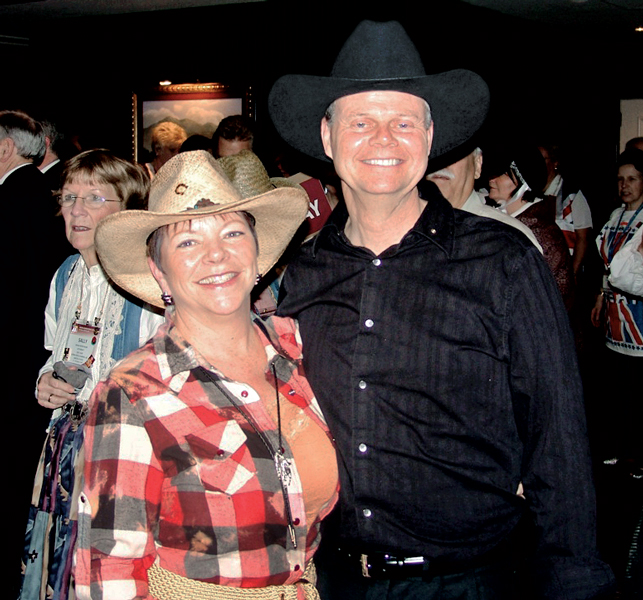
“It’s fascinating. Rotary is as strong in India as anywhere in the world, and has transformed India as much as India has transformed Rotary. I think the eradication of polio from India was an absolutely amazing achievement and it was Rotarians who drove it. And we learnt our lessons.”
Striking a thoughtful note, he says: “The future of Rotary, frankly, is not going to be paying for toilets, wells, school desks or ambulances. It is going to be our power to advocate change and this was best demonstrated by Indian Rotarians with polio eradication, and we finally became aware of what our real potential is.”
The future of Rotary is not going to be paying for toilets, wells, school desks or ambulances. It is going to be our power to advocate change.
He thinks highly of both Wash in Schools and Teach India programmes. “What Indian Rotarians have learned or drawn from their world experience has given them so much confidence and the way both these leaders (TRF Trustee Sushil Gupta and PRID Shekhar Mehta) are driving these programmes is simply superb. The rest of the world can learn tremendous lessons from these programmes.”
And the advocacy with the government is already happening. More important than building 20,000 toilet blocks, he says, is that “Rotarians are opening doors at the district level and the national level. If every Rotarian in India stood up and said we should no longer engage in open defecation, things will certainly change.”
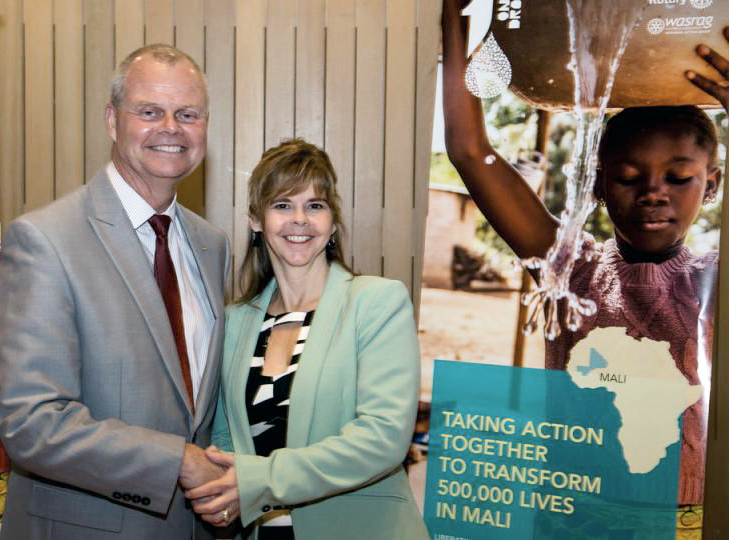
On the WinS project being much more than building toilets, Thorfinnson says, “It’s a lesson that took me twenty years to learn. I started water projects twenty years ago, but I now know that it’s not about drilling the well or providing bathroom facilities, it is about changing the country. And getting people to understand how important it is to wash your hands in school or home and not to engage in open defecation.”
Pictures by Rasheeda Bhagat
Q&A
We need creative thinking to reinvent Rotary
Incoming TRF Vice Chair Thomas Thorfinnson answers questions on the opportunities and challenges before Rotary.
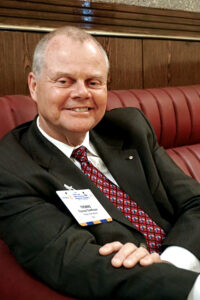
How has Rotary changed between 1980 when he joined it, and 2016?
Of course, there has been a lot of progress. Specially with our image. And we are much more diverse, driven to serve and more recognised internationally for what we can do. We’re starting to understand what our true capabilities are.
What about women; what have they brought to Rotary?
That’s huge … first of all they’ve brought diversity. And a different perspective. There is the caring and nurturing that a mother brings, a sense of the world from the perspective … sometimes, of disadvantage. When you’re in a certain situation, you need all the talents and weapons. We are battling terror and poverty, among other things, and we need the intelligence and experience of different people. So bringing women to the table has special advantages. Actually this has saved Rotary in North America for the last twenty years, or else membership would have fallen.
You mentioned terror; what role can Rotary play in promoting a more peaceful world sans terror?
As time passes, this is going to be more and more of our responsibility. I think we have a greater capability in bringing peace than any other organisation because cross borders, peace is built by providing the necessities of life. When you have water, education, you’re much less likely to engage in terror and conflict. And we can bring leaders to the table … both thought and government leaders. Often we look at Rotary as an organisation with boots on the ground, but it’s just not boots on the ground. Its connections with people who make the decisions in our communities and countries.
How will Rotary’s future pan out in the Americas where membership is falling?
What is happening in the Americas is just a hint of what’s going to happen across the world. We are ahead only because Rotary started here; it doesn’t mean that we are leading it but that we are experiencing first what is coming. Most clubs age and have life cycles to a certain extent. Similarly, to some extent, the organisation has a bit of life cycle too from incumbency, through the teenage years to when you were strong and vibrant, and then you become more satisfied and set in your ways … and that’s Rotary too. We’ve grown and were expanding in the Americas, were set in our ways and getting comfortable. Now we have to reinvent ourselves.
And how will you get out of that comfort zone?
Well, that’s the challenge …
At least you’re talking about it, accepting it!
Apart from projects and programmes, my other passion is how to take the organisation forward. We have to start looking at Rotary as a product in the context of club meetings. That it is not just about meeting every week, about the traditional model. It is about connecting and services … two key components. It is relationships and then coming together to take action.
Like fellowship and service?
Absolutely. You can use the contemporary terms of connecting and action or you can use the old terms of fellowship and service. It is the same thing. In its core and in its essence, that product sells, but if we wrap it in the old model of the club meeting every week, we may struggle. If we embrace the essence we’ll survive because that product is popular to 25-year- olds as well as 75-year-olds.
So how do you tweak the model?
It could be in the form of meeting twice a month, in the form of e-clubs or we could have someone joining Rotary in an area of focus. For instance, I join Rotary because I am interested in water and sanitation projects … like a vertical model. I am not joining at the club level but to serve in water. So you join for service initially and then start connecting, reaching out. That flexibility should be there. I am not saying that it is a solution, but that we need to have creative thinking.
Give me an example.
I think our mistake is much like Kodak. Kodak Corporation focussed only on the film and lost sight of preserving memories. If we focus only on the club model, we’ll be in trouble but if we focus on service and connections, we’ll be fine.
In the context of creative thinking and reinvention, what about 2–3 day meetings with long sessions, as happens at major Rotary events?
Well, people were comfortable 20 or 50 years ago sitting for long periods and listening to long speeches. Today we are used to instant delivery of messages … little bullet points. Yes, communication is a challenge. You have to package your story and deliver it very quickly, and with a sizzle.
I grew up watching 3–4 channels on TV. My daughters, now in their 30s, grew up watching 50–60 channels. And children today have a few hundred channels. In addition, they have internet where they can watch anything they want. And we expect them to join a club and sit for an hour and half?
It’s like asking for the moon!
What sell are the two core components — fellowship and service, but we have to package them differently … small, social gatherings, whether over a cup of coffee, or a glass of wine, people establish a connection. And when you want something to happen you use that connection. There are different ways to network, it doesn’t have to be over dinner every week.
As Vice Chair, what are your plans for the Centennial?
To assist Kalyan (Banerjee), the incoming Chair, will be my main job … with meetings, agendas, to make sure things are moving forward, to ensure accountability for the staff but they are superb. Since he too is passionate about the service aspect of Rotary, it is fun to serve with him.
Kalyan has got a lot planned; a lot of it is fund raising and also recognition of alumni at Atlanta. We are encouraging the alumni to come for the pre-event. The alumni are not just the scholars or Peace Fellows … of course the Peace Fellow programme is a great one. But we sometimes lose sight of how many students we have serviced through Rotary during the last 50–60 years.
How many of these do you expect at the Atlanta Convention?
We’re hopeful that we’ll see at least a 1,000 of the alumni; we hope they’ll come to the Convention because they appreciate what Rotary has done for them. That would be fun.
A unique support and gift …
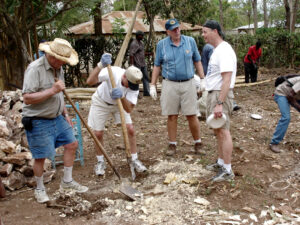
Steve Mattson’s story, related by incoming TRF Vice Chair Thomas Thorfinnson, is fascinating. He was a stockbroker and an investment adviser and involved in bonds to fund water systems of municipalities. But though involved in water systems in Minnesota, he didn’t want to be recognised.
Over the next 15 or more years, he gave $300,000 to TRF “and no one ever knew who he was. He kept it secret … part of the reason he did so was because he was so emotional about it and when people asked him he would start crying.”
Just before Thorfinnson left for the Sao Paulo convention, Mattson, who was going in for a brain surgery mailed him to say “what we did together was the most important thing I had ever done in my life.” He wanted me to know that. In the next six months he went through treatment and we met several times. He passed away in December and he and his wife left 80 per cent of their net worth to water projects, which is phenomenal.”
But, striking a pensive note, Thorfinnson adds, “it also puts tremendous responsibility on you when you meet somebody like that, it requires tremendous integrity and dedication to carry out what he wanted. He was only 65 and it’s a big loss for me. So yes, Steve is the unknown part of the equation. To a large extent I am where I am because of his gift and support.”





